What It's Like to Be a Mechanic in the Daytona 500
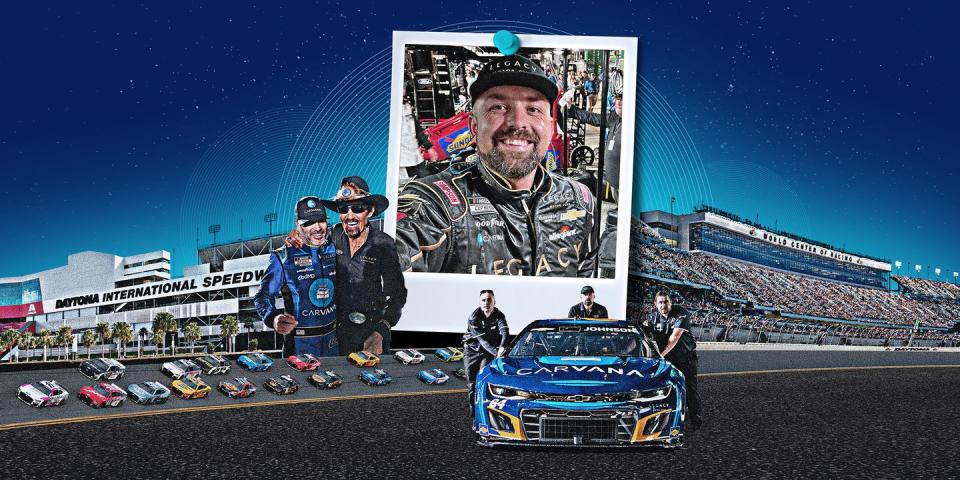
It’s a warm Sunday afternoon in Daytona Beach, Florida and I’m standing with Washington Commanders player Jamin Davis in front of the number 84 Chevrolet Camaro of Jimmie Johnson. We’re watching as Pete Davidson is escorted over to the Corvette pace car a few feet away from us. I’m not at Daytona International Speedway to make content. I’m not here to do any tech talks. I’m wearing a crewmember fire suit with LEGACY MOTOR CLUB printed across the front; I’m a race mechanic working on that number 84 Chevrolet Camaro.
I’ve always had an interest in working on a NASCAR Cup car, an interest that only increased when the Next Gen car was introduced, but most offers I got didn’t go under my consideration. I had other commitments as a mechanic and pit crew member in IMSA, as well as my various media projects. Competitive NASCAR teams that have the resources to win rarely offer part-time fly-in mechanic opportunities. That all changed with a chance text message from Legacy Motor Club Vice President Joey Cohen in late December. “Come do the JJ races?” it began, with JJ referring to the seven-time NASCAR Cup Series champion.
Johnson had purchased an ownership stake in the team just a month prior and announced that he would also participate in a limited number of races in 2023. I expected that those races would mostly be staffed with existing personnel from the team. That’s how most NASCAR teams typically do things, but it turned out that Legacy Motor Club wasn’t looking to be like every other Cup team. They wanted to augment their program with a variety of personnel.
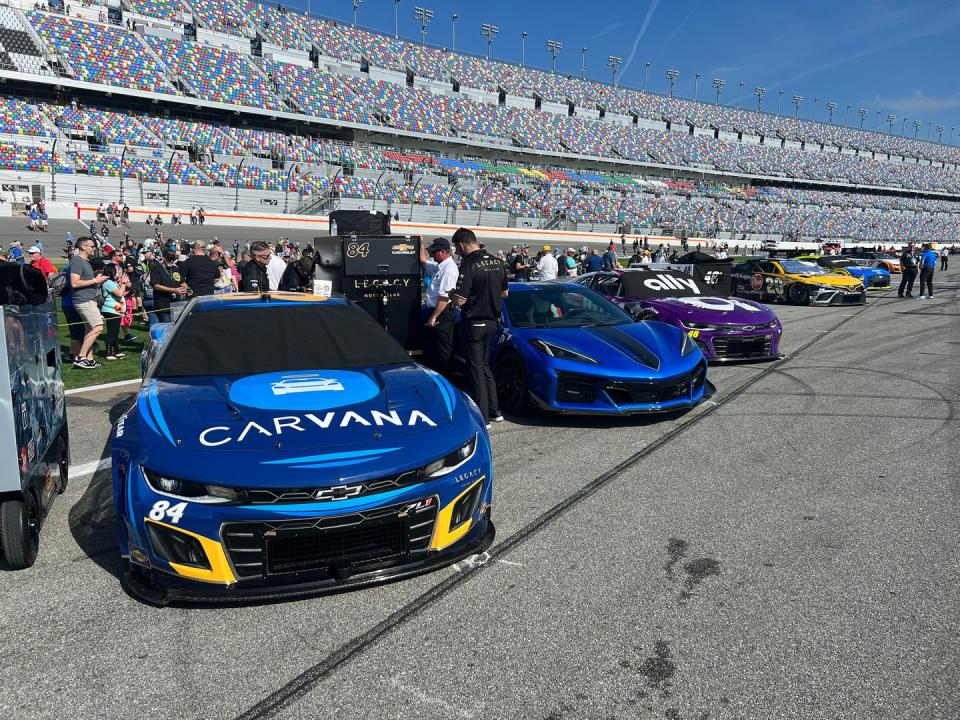
Working with a legendary driver for a winning organization was enough to pique my interest. I expected them to offer me road course races because of my IMSA background, but instead Joey started our chat by offering me the opportunity to go to the Daytona 500 with Jimmie and champion crew chief Todd Gordon. I immediately went to my calendar and marked off that whole week in Daytona while we worked through the paperwork.
The Daytona 500 is what I consider one of the crown jewel races of North American motorsport alongside the Indy 500 and Rolex 24 so I was incredibly excited to be able to have the opportunity to start the year with a contract for two of those races. My first trip down to Daytona was in mid-January as I worked on the number 14 Lexus RC F GT3 for Vasser Sullivan Racing and competed for 24 hours to reach a podium finish in the Rolex 24. I signed with Legacy Motor Club upon my return and started to get familiar with the program.
Crew chief Todd Gordon had similarly been getting up to speed with the team and by the time I joined the operation the rest of the crew was staffed with existing members of the Legacy Motor Club organization like our car chief Robbie Fairweather who was heading up the final assembly of the car.
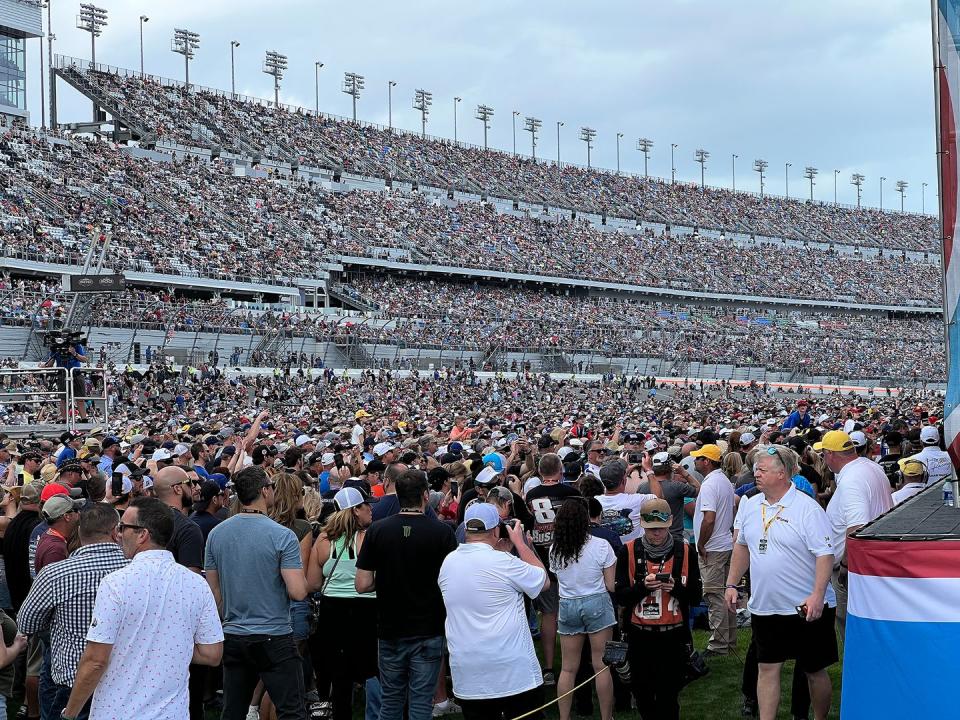
Unlike in IMSA, mechanics in NASCAR do not typically go over the wall to change tires during races. We assist the specialized pit crew by rolling and catching tires along with items like pulling tear offs from the windshield, so our next order of business was some pit stop practice with our pit crew with Johnson behind the wheel of the car. As Liz Clarke notes in her recent story, Johnson gathers all of us at the end of the practice session to thank us for our hard work and remind us to “have some fun.” This talk sets the tone for the entire experience going forward.
All of the people that have been assembled for the team are experienced in racing but many of us have never worked on the NASCAR Next Gen car. Johnson’s approach allows us to feel at ease, and it’s support from our teammates working on the full season cars of Erik Jones and Noah Gragson that gives us data to set up a top-tier car. After practice, we assemble to complete prep and pick up apparel so we can be ready for our flight down the following week.
I head to Statesville Regional Airport on the morning of February 15th to meet my teammates so that we can board a charter flight down to Daytona. One unique aspect of working for a NASCAR team is that they typically charter their own jets to fly out of Statesville or nearby Concord since so many people are involved in a race weekend. We arrive in Daytona Beach a little over an hour after departure with Daytona International Speedway as we land. We hustle directly out of the stairs from the plane and go to the cargo hold to grab our bags plus tools and parts that we had loaded in Statesville.
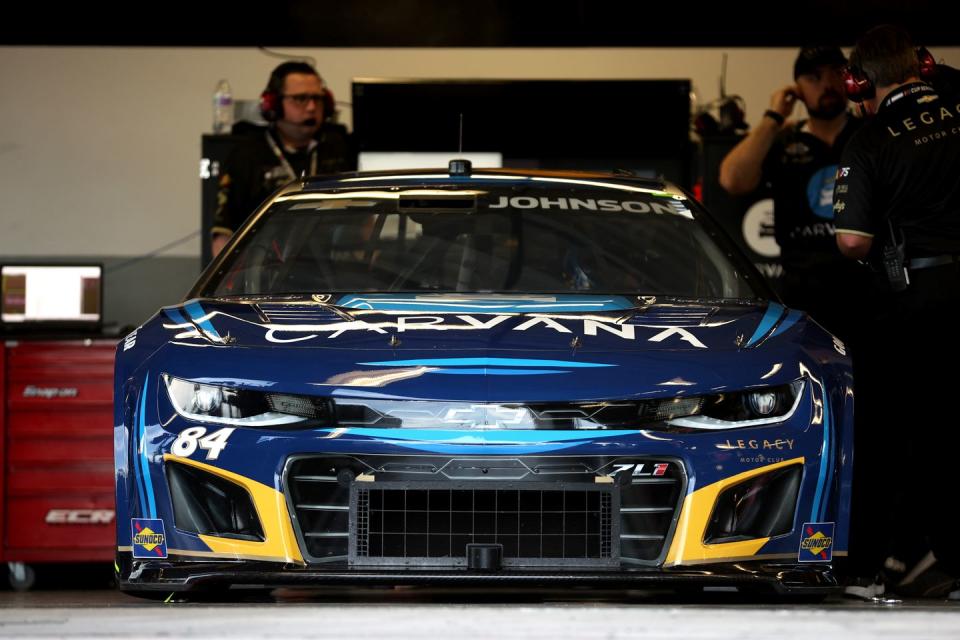
Arriving at the track on the first day feels very similar to my arrival there a few weeks earlier for the IMSA weekend, but as we walk into the garage some of the differences are immediately apparent. Unlike in IMSA, the trucks are already unloaded as we arrive so no unloading is necessary other than pulling the car out of the trailer. Pit boxes and wheels are transported by a third party company and those have also been unloaded and are in a waiting area for our tire technician and pit crew.
The first order of business is to check over the car and make sure that it is prepared for technical inspection. My car chief Robbie shares that we must pass technical inspection in the first few tries so that NASCAR does not start ejecting personnel as a penalty. We head to the first area where all of the important underbody aerodynamic components are inspected and measured with templates, like the diffuser and engine pan. We then roll to a second station where items on top of the car are checked. Once we pass through there, we go to a height and weight station that measures the car's weight on each corner plus heights for things like the splitter and spoiler.
I am familiar with many of these stations as I’ve spent a lot of time following the Next Gen car and even done some technical content for NASCAR on it, but I can see that the officials have made developments during the off-season to help curb exploitation of gray areas. One such change is the underbody scanner, which used to be a stationary laser scanner that teams pushed cars over. It is now motorized in order to make sure that each scan is done consistently without crewmembers pushing a car one way or the other.
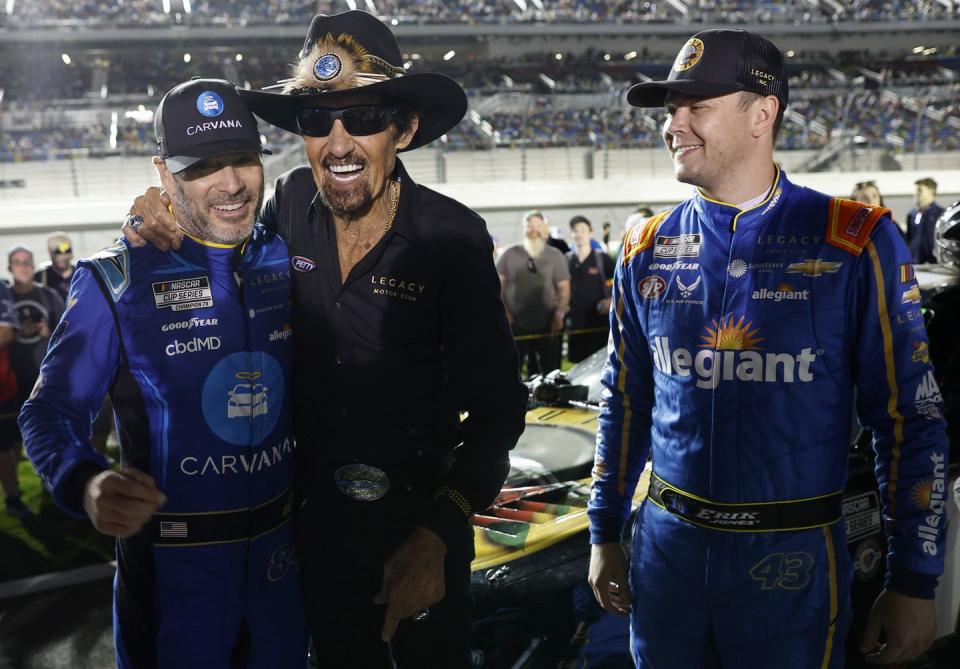
We appear to be in spec at the first few stations, but the most advanced station comes as the body of the car and the suspension alignment are scanned by a series of cameras and projectors developed by Hawk-Eye innovations known as the Optical Scanning Station (OSS). The scan completes and we learn that we’re close on a suspension measurement and are just slightly out of spec on a body component. We rush back to the garage to make adjustments so that we don’t miss the qualifying session for the Daytona 500 that’s coming up in a few hours. Our car is one of six cars without a charter agreement that is attempting to qualify for four open spots and missing the qualifying session would mean having to race into the Daytona 500 during the Duel races happening the next night.
We work on the car while looking at the clock and making adjustments and finally make it back into line to go through inspection again with a couple of hours to go. We pass the first few stations without issue, but fail at the OSS again. It’s back to the garage to make additional adjustments. We have to get it right this time because another failure could result in our car chief being ejected. That would not only leave us with less people to work on the car, but would mean that we’d lose the most experienced mechanic on the crew. We make further adjustments and get back in line with less than an hour to spare before qualifying starts.
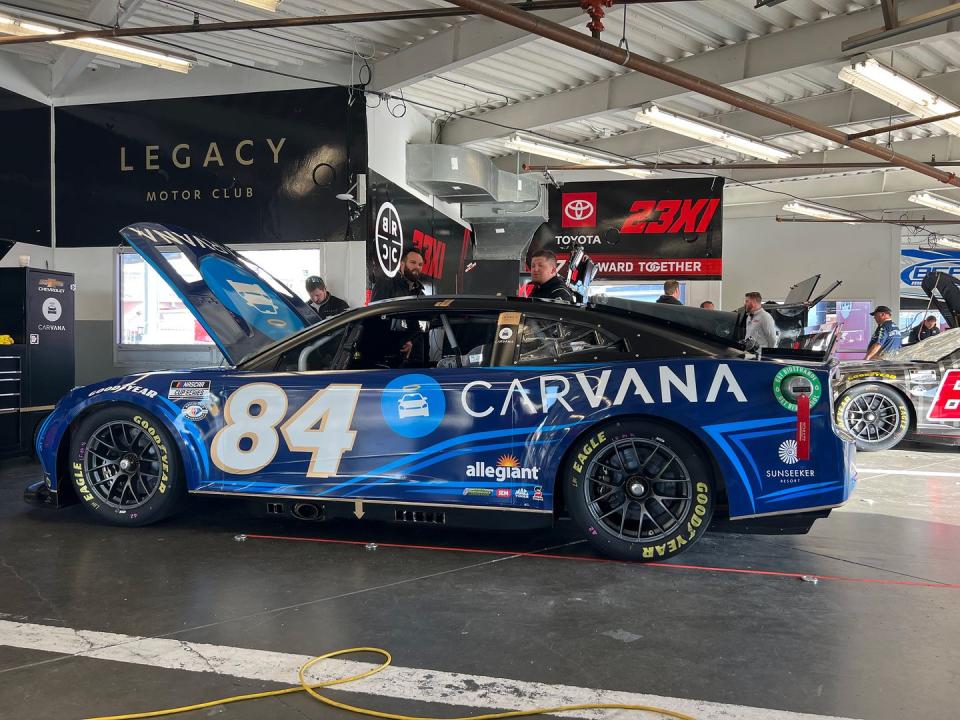
The scan finally comes back showing everything in spec so we hustle over to a designated spot in the race prep area so that we can install race shocks and race tires and get the car ready for qualifying. The qualifying session officially starts but I’m focused on the clicks of the torque wrench in my hand, making sure that the wheels are properly fastened before we roll it out to do some blistering speeds around the oval. We complete the prep and turn the corner into the garage to a crowd of cheering fans as we push the car toward its qualifying spot. As the first car takes off, we park on our qualifying spot on pit lane just ahead of the Camry of Travis Pastrana, also competing for one of those four open spots.
https://twitter.com/NASCAR/status/1626028280254963712?s=20
Jimmie takes off and we watch as he sets the fastest open time of the day, but we wait anxiously for two more cars to make their runs. We end up the fastest open car of the night and are locked into the Daytona 500 along with Pastrana. We get called back to technical inspection along with the other open cars, and once we pass we head back to the hotel a bit at ease.
https://twitter.com/LegacyMotorclub/status/1626037477671567360?s=20
The Duel races run the next evening and Jimmie starts to get more comfortable. It’s his first time experiencing race conditions like drafting with the NASCAR Next Gen car. Once our Duel race is finished we roll the car back to the garage to give it a cleaning and do a nut and bolt. The next two days consist of a couple of practice sessions where we tweak and make adjustments on the car, while Jimmie goes out and practices laps and stopping in our pit box. Once the final practice session is completed, we go over the car once more and check components like the suspension and brakes. At the same time we’re making adjustments to make sure that we’re still in spec for technical inspection.

Sunday morning starts with preparing the car for the race–cleaning up the wheel hubs to prepare them to accept new wheel nuts, polishing the body to make the livery stand out, other small tasks. We roll the car to pre-race inspection and flow through all of the same stations as earlier in the week, only this time we’re able to pass on the first try. An official motions us to an area where we can install our shocks and starting race tires and race wheels nuts. Once all of that is completed we are instructed to push the car to the grid.
On the grid, we position the car and a generator cart beside it that offers tools that we need to keep the car ready for race start. From there, we are walking all over Daytona. First it’s back to our transporter to check over our race gear. Then it’s over to the catering area after confirming that we have everything we need for the race and we bring our brunch back to the transporter. Back to our garage area to clean up our tools and gear, back to the transporter once more with everything we need, and then into a pre-race strategy meeting led by crew chief Todd Gordon. Much like earlier in the week, we’re reminded to do what we practiced but also to savor the moment and to have fun.

The meeting adjourns and we start getting into our gear for the race and checking everything before taking it down to our pit box and then over to the car as the grid opens for VIP guests. The grid fills quickly and a large crowd forms around the car so I chat with visitors around the car while also keeping an eye on the body panels and aero components like the splitter. Pre-race ceremonies kick off and the Thunderbirds complete a flyover, which gets my adrenaline pumping for the race. Jimmie makes his way to the car and we collect our tools and head over to our pit box.
The first part of the race is pretty straightforward as everyone settles in and tries to stay with one of two main drafting groups of cars. The first few pit stops are pretty quick as most cars only take two tires and a bit of fuel with longer stops happening during stage breaks and yellow flags. My role is pretty straightforward as I am catching tires being rolled back from the car during pit stops and occasionally pulling a tear off from the windshield if needed. We’re all encouraged as we see Jimmie making his way to the front and being able to run in the top five at times. His radio communication matches his performance, as he is happy with the car and requests minor adjustments.
Things ramp up as we get into the final laps of the race and see many of our competitors get taken out in crashes as everyone starts battling for better positions. We execute our pit stops consistently and then wait in a restart during a late race yellow. Jimmie takes off in 12th, running in the bottom lane. There’s a bit of hope that he might be able to make his way to the front, but cars in front of him start colliding a couple of laps from the finish and he has nowhere to go.

We hear him come on the radio to share vitals of the car while we prepare tools and materials to complete a repair, but eventually we hear the deflating report that engine oil pressure is dropping. Everyone knows the car is done for the day.
We rush back to our transporter to get ready for the car to be hauled in by a tow truck. To be able to roll it in and strap it down, we may have to remove damaged components from the car, so prepare saws and hammers. The car is dropped off with front end damage, but luckily all of the wheels still roll. All we need to cut off is a few pieces sticking out and get it converted into transport mode. Once the car is loaded up, I rush back to pit lane to collect our remaining tires. I take them to the tire transport trailer while my teammates load up the rest of our equipment. By the time I make it back, the transporter is mostly loaded so I hop into the office up front to change and then make my way to the parking lot so we can hustle across the street to the airport.
There is a bit of disappointment as we sit in traffic and I reflect on the day, but the excitement of the event and my competitive nature immediately has me plotting how I can get back to compete in this grand event again. We make it to our plane a few minutes later where we have sandwiches and chocolate chip cookies waiting for us. We take off for a quick flight back to Statesville and go our separate ways, a whirlwind dispersed and settled until the next time Jimmie takes to the track.
You Might Also Like

 Yahoo Autos
Yahoo Autos 